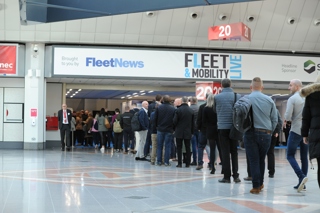“We then switched to using credit cards but we were not able to get the mpg figures or the data we needed. With our new provider we have that and they are proving to be cost-competitive.”
However, not all survey respondents have a positive view of fuel cards. One comments: “Too many fuel cards restrict the choice of outlet so more multi-brand cards would avoid wasted mileage to reach a particular brand.”
His view echoes a general theme that fuel cards, while used by the majority of fleets (70%), aren’t seen as the optimum way to cut fuel usage – just 14% say it is the single-most effective way to reduce costs.
Another popular measure is checking tyre pressures. Under-inflated tyres increase fuel consumption by 4% and last half as long as correctly inflated tyres, according to the Campaign for Better Tyres.
Other tactics tackle rental vehicles, ensuring they are returned with the correct level of fuel to avoid a recharge. Similarly, a month before a vehicle goes off-fleet, advise drivers not to leave a full tank of fuel in it.
Driver communication and education is key. Issuing drivers with tips on driving more efficiently is a step taken by 37% of survey respondents.
A third of companies also encourage car sharing, 34% encourage tel/video conferencing and 24% promote the use of public transport.
Next – the more difficult steps
The steps which companies are not taking, arguably, fall into the ‘harder to do’ category – either because they require financial investment or the company believes they may provoke a negative reaction from drivers.
Only a fifth of survey respondents conduct eco driver training even though companies can demonstrate improvements in mpg.
The Energy Saving Trust says that after its 50-minute Smarter Driving course drivers will immediately improve their fuel economy by 15%, with a realistic long-term goal being a 7% improvement.
However, it’s worth bearing in mind that companies which pay the fixed Advisory Fuel Rate will not benefit from any efficiency gains achieved by their drivers.
One fleet manager who wished to remain anonymous said he would like to introduce driver training to save on fuel, as well as for environmental and health and safety reasons, but it would “require a change in approach from the company”.
“It is useless having data on poor mpg if we don’t then invest in driver training,” he says.
“We need to assess drivers and see who needs some TLC. Drivers will benefit from training because it will flow into their personal driving. But instead of viewing it positively it is seen as interference.”
He would also like to install telematics for route planning and to get further information on how employees are driving but this is also considered “a step too far”.
A survey of 277 drivers by ALD Automotive in June revealed that drivers may not be as opposed to telematics as companies believe.
Almost 90% would approve of on-board technology that could help reduce their fuel bill while 73% approve of on-board technology that could help improve their driving style.
However, when asked if they would be happy to have on-board technology that accurately identified the location of their vehicle numbers dip to 61%.
ALD has been fitting telematics to its vehicles as standard since 2004, initially because it wanted accurate odometer readings.
Customers who make full use of the telematics can expect fuel savings of 10-15%. Evolve Facility Services, which has 70 vehicles, has saved 10% on its annual fuel bill since it started using the ProFleet2 system last August.
Transport manager Geoff Knowles says telematics was introduced because the company does a lot of reactive work and needs to find which employees are nearest.
But the 10% saving has also been achieved by using the software’s ‘fleet league table’, which shows which drivers are braking and accelerating harshly, idling for long periods of time, over-revving or speeding.
Telematics can also show if vehicles are being used out of hours, helping companies to clamp down on private use of vehicles.
Evolve is a joint venture company derived from two maintenance companies – JC Construction and OP Building Maintenance Services (OPBMS).
The fact that OPBMS already had telematics made it easier to introduce ProFleet2, according to Knowles. But he believes the fuel savings mitigate the cost of telematics.
Peter Millichap, marketing manager at vehicle tracking company Navman Wireless, points out that improved productivity is a key part of return on investment.
He believes companies will see a return in the first quarter of using vehicle tracking.
Companies can opt for a pay-as-you-go approach with costs of less than £1 per vehicle per day for vehicle tracking alone.
However, to get information from the engine management system such as harsh braking and accelerating expect to add 20% to the cost.





















Login to comment
Comments
No comments have been made yet.